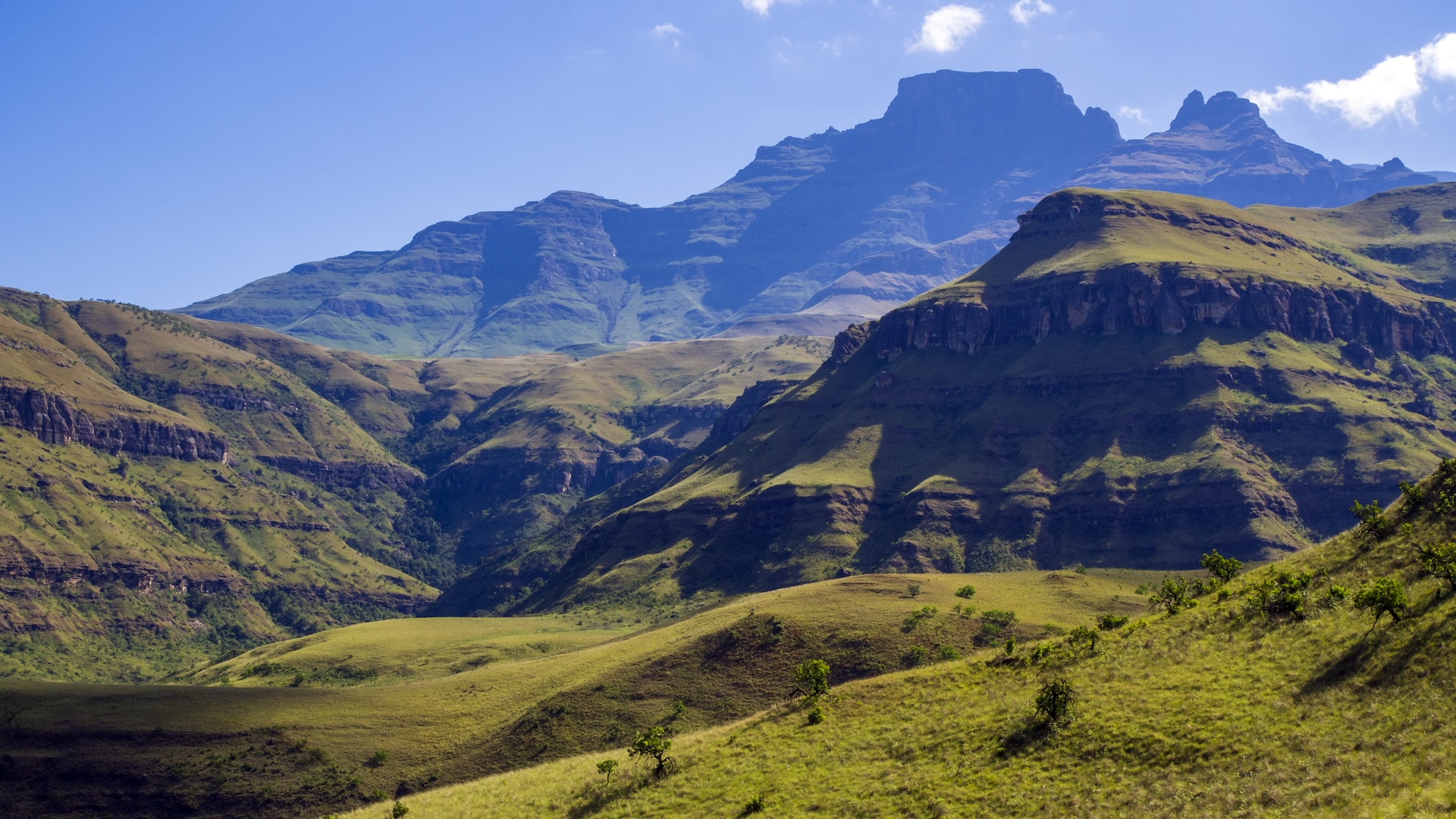
High plateaus rise in the interior of continents thanks to churning deep inside Earth hundreds of miles from where they eventually spring up, new research suggests.
As continents break up, massive cliff walls may rise near the boundaries where the crust is pulling apart. That breakup sets off a wave in Earth's middle layer, the mantle, that slowly rolls inward over tens of millions of years, fueling the rise of plateaus, the new study found.
Scientists have long known that continental rifts triggered the rise of massive escarpments, like the cliff walls that separate the East African Rift Valley from the Ethiopian plateau, said lead author Thomas Gernon, a geoscientist at the University of Southampton in the U.K. And these steep cliffs sometimes fringe inland plateaus that rise from the strong, stable cores of continents, known as cratons.
But because these two landscape features usually form tens of millions to up to 100 million years apart, many scientists thought the different formations were driven by different processes, Gernon told Live Science in an email.
In the new study, published Aug. 7 in the journal Nature, Gernon and colleagues studied three iconic coastal escarpments that formed during the breakup of Earth's last supercontinent, Gondwana. One, along India's coast, fringes the Western Ghats for about 1,200 miles (2,000 kilometers); another, in Brazil, rings the Highland plateau for about 1,900 miles (3,000 km); and the Great Escarpment of South Africa encircles the Central Plateau and spans a staggering 3,700 miles (6,000 km), according to the study. The interior plateaus in these regions can rise a kilometer or more, Gernon said.
The team used topographic maps to show the escarpments aligned with the continental boundaries, which suggested that rifting created them. Computer simulations showed that the continental rifts disturb the mantle, triggering deep waves that roll inward toward the continent's heart.
Next, they analyzed existing mineral data to show that uplift and erosion on the plateau migrated inland at roughly the same time and speed as the mantle wave churned miles below. This showed the two landscape features were likely triggered by the same continental breakup process.
In the case of the three escarpments in the current study, the churn was achingly slow, progressing at just 9 to 12 miles (15 to 20 km) every million years, the study found. Yet this slow-motion mantle wave dramatically reshaped the landscape. As it marched inward, it progressively peeled off the strong roots that anchor continents at the crust-mantle boundary. Without these anchors, the cratons became more buoyant and therefore rose.
Wind and rain over the eons then whittled them away further, making them lighter and more buoyant still. This process culminated in the stable, high plateaus we see today.
In theory, the same process may explain other escarpment/plateau regions, such as one in North and South Carolina or one south of Cameroon, Gernon said. The cliffs and plateaus in the Carolinas are less dramatic than the three studied in the paper, likely because they formed up to 100 million years earlier than the three Gernon's team examined. That gave erosion tens of millions of years to erase traces of both mantle churn and uplift.
"Escarpments from much earlier breakup events are unlikely to be preserved in the geologic record," Gernon said.
The same supercontinent breakup and mantle wave is a catalyst for other geologic processes, including the eruption of diamonds from Earth's center, Gernon's team previously found.
"It is fascinating to think that a diamond worn on an engagement ring may be just one of the results of the same geological processes that form some of Earth's most dramatic landforms," Gernon said.







